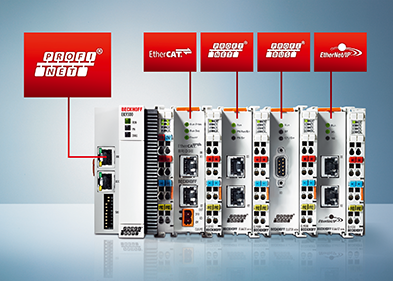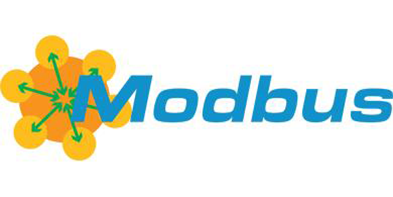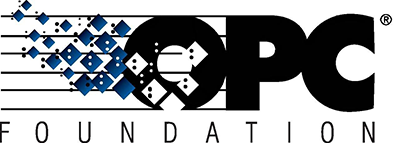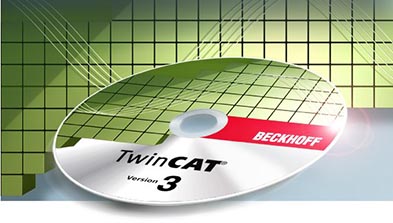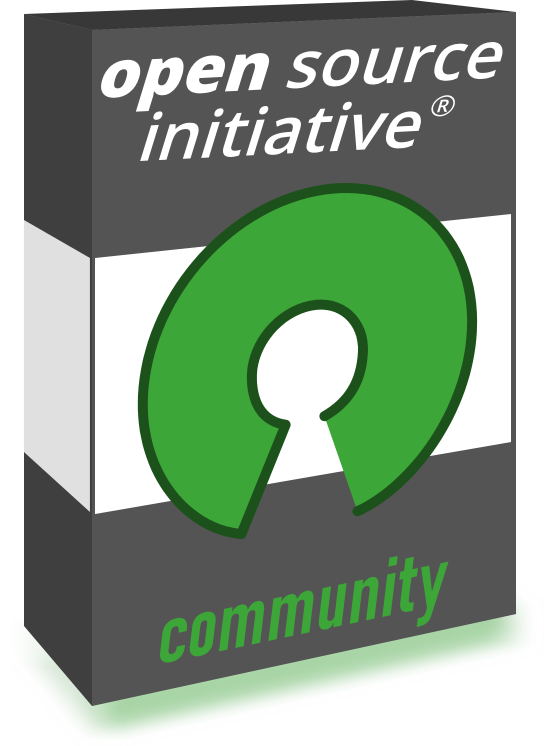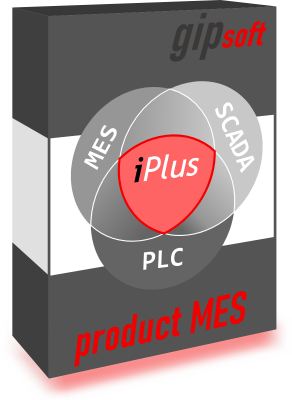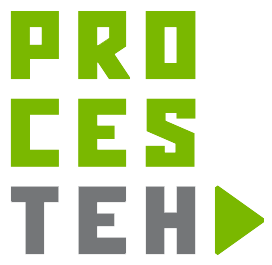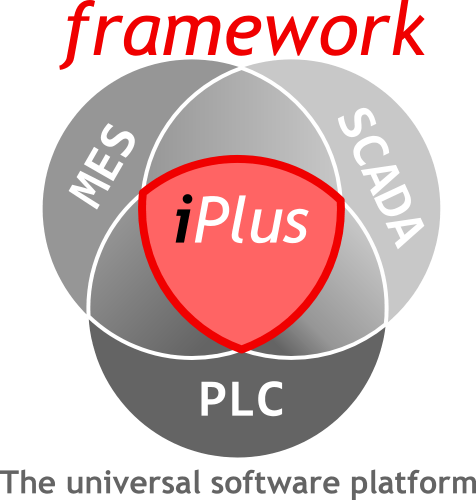
Welcome to gipSoft!
Empowering Industry with Open Source Innovation
At gipSoft, we are on a mission to restore autonomy and freedom in the industrial sector through our groundbreaking iPlus-framework. In a world increasingly dominated by proprietary systems and corporate control, we stand as a beacon of independence, offering a powerful open-source software platform that empowers businesses, integrators, and developers alike.
# Our Vision
We believe that the future of industry lies in open collaboration and shared innovation. Just as Linux revolutionized the software world, the iPlus framework is poised to transform industrial automation by providing a flexible, scalable, and efficient solution that breaks free from the constraints of traditional software models.
# Why Choose iPlus Framework?
For End Users: Whether you're in mechanical engineering or any manufacturing sector, our framework offers you the tools to regain control over your production processes. With iPlus, you can achieve seamless integration, optimize resource utilization, and maintain full ownership of your data and solutions.
For Integrators and Developers: Join us in building a sustainable, community-driven ecosystem. The iPlus framework is designed to facilitate collaboration across disciplines, enabling you to create and extend software solutions that meet the unique needs of your clients while maintaining updateability and flexibility.
# Our Unique Approach
As a small, financially independent company, we have developed the iPlus framework entirely on our own, positioning us uniquely to lead this liberation mission. Our platform combines classical programming with a low-code environment, offering a hybrid solution that supports both transaction-based and real-time, time-critical applications.
# Join the Movement
The success of our mission depends on the collective efforts of end users, integrators, and developers. We invite you to join us in this journey towards a more independent and sustainable industrial future. Together, we can create solutions that are not only innovative but also free from the limitations of proprietary systems.
# Support Our Mission
Your support is crucial. Whether by contributing to the framework or our MES, developing your own components, or simply spreading the word, every effort strengthens our community and brings us closer to achieving true industrial freedom.
What is the iplus-framework?
# The iplus-framework is a Low-Code software platform that combines database-based with object-oriented application development and its presentation layer. It functions as both development and runtime environment. Basically it is an extension of the .NET framework (NET 7) from Microsoft so that service-oriented client / server applications can be developed more easily, flexibly and quickly.
You can use it to develop
- transaction-based systems,
- SCADA applications,
- mobile solutions,
- time critical and scalable backend solutions (Multitier)
- machine controls with frontend
- Industrial Internet of Things application (IIoT) ...
with a uniform programming model. By "uniform" is meant that it makes no difference whether you develop a class for server-side or client-side use. A transaction-based form is programmed in the same way as a communication component or an automation object such as a motor or temperature sensor.
# You can also provide your solutions as software components, which other developers and project engineers can use to provide their end customers with an integrated overall solution. A project engineer does not have to have any programming skills, because he only has to orchestrate the components via drag & drop in the iplus development environment. Server-Side components runs also on Linux (for IIoT purposes).
This new approach enables a huge increase in productivity and an unprecedented ease of use and simplicity for developers, project engineers, consultants and end users.
Download iplus-framework letter!Architecture
# An object-oriented, component-based and service-oriented framework forms the core of iplus-framework. This means that all classes or components are only instantiated through the configuration in the database. There is no need to compile an entire system and direct references between assemblies are not necessary because instances communicate with each other via a neutral interface.
# The communication between the instances takes place either in the local memory space or distributed over many network nodes. The developer is completely freed from all network programming. Which instances run on which computer can only be set with a few mouse klicks in the iplus environment. This network-transparent approach enables unlimited scalability of the overall system. The integrated graphical workflowengine is also scalable. The system is completely event-driven in order to enable almost real-time processing and presentation.
# Just as the instances (model) are decoupled from each other, the presentation level (view) is also completely decoupled from the model and only saved in the database. The advantage of this approach is that other people who are not developers can adapt the UI during runtime to their needs without having any programming skills and to know how the deeper software levels work (e.g. network communication, database access ...) and that according to the WYSIWYG principle. This is also an enormous advantage for project engineers and consultants, because the customization can be carried out extremely quickly. With the iplus framework, you receive a SCADA system as a "by-product", which however, is much more powerful and flexible than the classic SCADA systems because it no longer makes a difference whether you want to design an motor, a communication driver, a workflow class or a transaction-based mask.
Unlimited expandability
# Microsoft Visual Studio® allows you to develop your own libraries set on the iplus-framework. There are only a few rules to comply with in order to set up so-called automation components. While doing so you can focus entirely on implementing your logic; other complexities such as networktransparent event processing, asynchronous method calls, access to databases, persistence of objectstatuses, remain hidden. This abstraction allows for a universal programming of all classes including, among others, transaction-based business objects, such as warehouse management components, automation objects, e.g. valves, engines, and communication objects, such as ERP connection, mail components, scanner. The same programming model is used for all classes and it is always easy to use!
# Minor project-specific customizations can be developed straight in the iplus development environment without the use of Microsoft Visual Studio®. The development environment consists mainly of a project configurator, a user interface designer, a workflow designer, and a code editor. Compiled classes from assemblies can be virtually extended by properties, methods, designs in the object-oriented sense. Therefore, it makes no difference whether you add properties to database tables (entity framework) or configure a class for plc-communication with process variables. This abstraction and standardization leads to better reusability and extensibility and a shorter training time in existing projects for other people.
# Since the iplus development environment is programmed with the iplus-framework, you can expand it as well and tailor it to the project requirements, build your own tools to speed up your day-to-day business and reduce your period of project development significantly.
Your solution
# How you use iplus-framework is completely free.
# Either you use the standard iplus frontend or you make your own product.
# You can also distribute your solution as a software component hosted on other iplus installations (Runtime). This is done purely by configuration in the iPlus development environment (orchestration) where components from other manufacturers are also integrated. Thus, your product runs together with other products on the same target system. In addition, your software components and components from other vendors can communicate with each other without having a direct DLL dependency.
# Regardless of whether you distribute it component-based or as your own end product, iplus includes an integrated license manager for the commercial use.
Update– und Upgrade
# iplus-framework also comes with a built-in package management system that helps you export your libraries, project configuration, designs etc. as update package. That enables you to provide your licensees with updates and to supply your customers with modifications tailored to their project requirements which you tested in advance on your own development system. It is even possible to transfer updates directly from one database to another.
# The concept of the loose coupling of components, enables iplus-framework updates, that we deliver, to be installed independently of your package updates.
# The iplus package management system is similar to the use of nuget, but with the main differences that
- the software components do not have to be linked together by a final compilation,
- that a software package can only be declarative (no .NET assemblies, only project configuration files and GUI description in XAML),
- the packages can be added during runtime (e.g. in a production system).
# This has the following advantages:
Different parties (project engineers, consultants, developers, teams) can work independently of one another on an overall solution.
For time-critical systems, the overall solution can sometimes even be expanded during productive operation. If a suitable time window is then available, the iplus-framework services can be restarted with the fully configured setting.
Integrated change request management: configurations that have been created on test systems (local computer, shared test system ...) can be transferred to the productive system via export / import.
GUI & SCADA
# The vector-based 2D-/3D user interface (WPF) is generated dynamically out of the database (XAML). Designs can be overwritten in order to suit the object orientation. The whole user interface, such as forms, controls, can be customized during runtime while still remaining updateable. What’s more, it is adaptive and adjusts to all screen resolutions. For mobiles we use MAUI.
# Hierarchical and consistent alarm system for all components. Unlimited alarm history and relationships with application data, e. g. production order, batch, material management …
# Logging process variables. Each property of any given instance can be logged event-based and displayed in a graph. Such graphs can plot both live and history data on various scales. The chart control offers many different setting and presentation options.
# FAQ: Desktop/Mobile vs. Browser?
What we often forget: The actual purpose of the browser is to transmit information to unkown users. And the actual purpose of cloud computing is load balancing and scalability when the number of users using Internet services unexpectedly increases. If you know the user - where is the problem starting a local App that connects to services via Internet/Intranet?
The argument of simple application delivery via cloud for enterprise applications versus on-premises is weak if the on-premise deployment is done well and easy without any installation (One-Click). And a MVC-pattern with different programming languages and complicated JS-frameworks on server and client side is not the right choice if you want to build applications for well-known users efficiently and timesaving. The MVVM pattern of clean separation of view and model is technically a much better solution. More about MVVM
Workflows
# ISA-S88 (DIN EN 61512).
# Graphic workflow-designer for programming all kinds of process sequences. This allows you to model your own business processes of any kind (e.g. production processes, logistic processes, machine controls...).
# Graphic program sequence history. All steps of a process that are performed on executing a workflow or batch are logged along with their parameters enabling you to view the audit trail as a Gantt chart in the log viewer. A comfortable and extensive search system assists users in spotting and improving process issues.
# Varied options for analysis and logging. In the object explorer (live-debugger) the object status of all instances can be visualized and controlled along with their settings on the server or client.
PLC
# OPC-UA, Modbus-TCP, RFC1006 (Simatic®) drivers.
# Converter and adapters All engineering offices use different ways of programming their PLC. We offer you the perfect means to adapt iplus-framework quickly and easily to the PLC model you’re using in order to reduce the period of project development significantly.
# Complete Beckhoff®-TwinCAT3®-Integration. Our iPlus automation component model has also been implemented in TwinCAT3®in order to allow you to represent your iPlus project almost one-to-one in TwinCAT®. The built-in Twin- CAT project synchronizer generates or synchronizes your whole iPlus-project with the TwinCAT® project. After the synchronization is complete you are only left to program the remaining project-specific logic. Using our special TwinCAT communication driver communication with all objects works plug-and-play and there will be nothing left for you to configure. The iPlus visualization is constantly being updated in the millisecond range owing to the event-based programming technology. With iPlus you can save 80% of the time that would be spent programming your PLC and 100% configuration time.
Additional features
# XAML-based graphical report generator. Reports can be generated from data bases as well as from the whole available object model using component live data, serializable objects etc.
# Multilingualism. As many languages as desired can be added. It allows you to translate functions as well as property -values of application tables.
# A group-based rights management system allows you to assign read and write access for all objects, properties and methods. What does this mean in concrete terms? No matter what type of class or component is registered in the iplus development environment, it is up to the rights management. Whether you want to administer a power-on command for a motor instance, a posting method in a warehouse management class, the property of an entity object (table field), or access to a process variable of a configured PLC driver - everything is consistent thanks to the abstraction of the iplus framework!
# Role-based online documentation system. Documentation can be represented and linked according to different roles.
# Corporate Design. You can adapt the style and design of iPlus to suit your design standards and your company’s Corporate Identity.
What is iplus-MES?
# Which features does a MES (Manufacturing Execution System) system need today in order to meet the challenges of the competition in modern industry?
- An optimum stability, performance and flexibility must be ensured.
- Complex production processes have to be presented in a way that is easy to understand for the user.
These requirements are the basis in the development of iplus-MES. With iplus-MES you completely close the gap between the company level (ERP) and the field level at the highest technological level.
# iplus-MES is a product that was developed with the iplus-framework. This is a standard software that is highly configurable and adaptable due to the advantages that the iplus-framework brings with it. That is why it can be expanded to different sectors and customer-specific solutions. We have already covered a large part of the requirements from process technology with our own industry add-ons.
# If you are an end customer,
you can purchase it directly from us and we help you to introduce the software. We can also implement your individual wishes, which are not included in the standard, as a customer add-on.
# If you are an engineering company or an integrator,
you can roll it out with your own customers. Due to the object and service-oriented architecture of the iplus-framework, you can expand and adapt everything in the MES modules for your industries.
Here: Download MES brochure!
 |
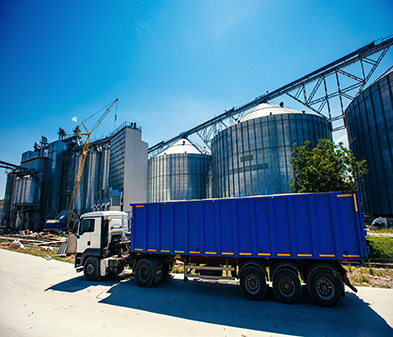 |
 |
 |
Architecture
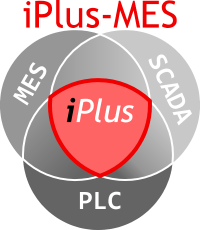
# The database model serves as the base on which various production and business processes can be depicted. We put great emphasis on creating a completely normalized model that adapts to your production and IT system landscape, not the other way round. The ease of adaption can only take effect if you’re using the right “chassis” such as our iplus-framework.
# As an integrator, you can also expand the database model for your purposes or you can use your own model that reuses parts from our MES model. This freedom is possible because you decide for yourself on which software levels you want to set on:
- iplus-framework.
- iplus-MES, which builds on level 1.
- Your specially developed industry solution, which is either built on level 2 or directly on level 1.
- Your customer solution that builds on level 3.
Why iplus-MES?
# iplus-MES is not dedicated to specific industries but can be used in both process and production technology. The special structure of our iplus-framework allows for customized extension of the MES features by sectoral features. This way, iplus-MES has come to be in use in various industries.
# With its failure-free merging of production cycles, iplus-MES helps you stay one step ahead of the competition and achieve a perfect utilization of resources and the highest possible efficiency. In addition, all processes are rendered considerably more transparent.
Read at Wikipedia, which benefits you have with a MES and why you should consider to introduce it in your factory: https://en.wikipedia.org/wiki/Manufacturing_execution_system
# Facts and Figures:
- >30 Installations, >500 Workplaces/Users, >4000 Machines and Devices
- 100% successful projects,
- 100% satisfied customers (Ask us for our references),
- Best price/performance ratio of any competitor and best ROI. (Ask for a non-binding offer),
- Investment security through on-premise license model. (Due to the cloud hype in recent years, the TCO has increased enormously. Cloud and Industry 4.0 are two completely different things.)
# “With iplus-MES you make the right business decision in the long term!”
Usability perfected
# The real usability of a software depends on its user acceptance, we are aware of that fact. For that reason, we developed iplus-MES with a focus on high usability. Many years’ experience and constant communication with our users has helped us succeed in creating with iplus-MES an easy and intuitive graphical user interface that differs vastly from other products on the market.
# The merging of the world of SCADA with the transaction-based world of MES allows for an exceptional user experience:
# The user can “surf” and navigate seamlessly, without key-board entry, between physical objects, such as machines and modules, and business objects like application data since all features are linked. With the help of iplus-MES the user does not have to know all relations and contiguities between data in order to be able to manage the control system effectively. That shortens training periods considerably.
Scope of iplus-MES:
- # master data management
- # production and control
- # material management
- # logistics
- # quality management
- # maintenance
Masterdata
# The master data management comes with a basic set of properties that are commonly used in a lot of industries. Through the iplus-framework, the database model (entity framework) can be extended to include more project- or industry specific properties, relationships and complex structures without losing updatability! Some of the most important master data are:
- # material master (groups, GMP, type of material)
- # quantity units and conversion rules
- # hierarchical model of storage location and stockyard
- # lab and quality master data
- # client and address management
- # staff and visitor administration
- # vehicle and motor pool master data
- # RFID/Smart Card management
- # service and maintenance data
- # workflow management
- # Bill of materials / formulas
# The variety of the aforementioned master data illustrates how wideranging iplus-MES is. Its one specific feature, however, is its production technology. Through a ingeniously method, we call it “a strict entity separation with progressive concretization”, iplus-MES can depict any production process.
Basic components are:
# Graphic process workflows with inheritable parameters and routing rules. iplus workflows are universally applicable, for instance for production control, interface communication, business processes, and can be created or programmed by the end user on different levels of abstraction.
# Material workflows for modelling flows of materials and relating them with process workflows.
# Bills of material related to material workflows and process workflows.
Production and control
We continued our principle of „strict entity separation with progressive concretization“ in production:
# Production order: All process parameters, routing rules, material compositions defined in the master data can be refined and concretized using inheritance mechanisms. In addition batch plans and prioritization rules can be set up. After the start of both manual and timed production all data that are part of the production order can be monitored live such as the amounts used and produced including their lot and batch designation and the graphic record of production. Long term storage of production data is nearly unlimited, i.e. only limited by the maximum capacity of the database.
# Process control and visualization: here is no automation process in iplus-MES that runs hardcoded. The system control uses workflows that are instantiated dynamically in the background. Each workflow node has its own status and acts autonomously in a large network of so-called automation components, which are structured and connected similar to the internet. Having its own defined task or function, each automation component comes with different features and in varying states and in turn triggers other automation components it is related to. This more or less indirectly creates an organized process flow.
The process flow and the complete process status are graphically represented in the visualization and process control. Depending on the authorisation level of the user, the cycle and every individual status can be managed down to the smallest detail via user interface in order to keep complete control over the production. Using iPlus, you never experience pending processes that have to be fixed by a programmer, since iPlus functions as development, runtime and diagnostic environment all in one.
# Simulation: Most PPS systems are based on the MRP II approach and traditional capacity planning. That reinforces a basic source of error: The planning calculations are done with predefined algorithms and do not take into account the status of all machines in a facility. These other systems do not control the machines, they only treat them as black box.
„This approach does not meet the requirements of industry 4.0.”
Rather, the same logic that manages the system control or MES (manufacturing execution system) has to be implemented in the planning algorithm as well. And this is where the unique feature of iplus-MES come into play: With its process control logic already implemented in the automation components and its process cycles managed via workflows, iplus-MES allows you to run the production in fast motion in a mirrored testing system. This way, all automation components are put into simulation mode and the production system is run in a “sand box” of sorts. The simulation result reflects the real production process and helps you recognize shortages in resources in advance.
Material management
# Warehouse management
- with or without lot designation
- minimum and maximum reporting and tolerance limit
- monitoring of expiration dates
- material reservation
- accounting history
- various inventory views
- inventory
- daily, weekly, monthly and annual reports
# Procurement
- contract management
- order management
- delivery notes
# Sales
- contract management
- order processing
- delivery notes
- accounting
Warehouse management is often situated as a grey area in between the fields of responsibility of ERP (enterprise resource planning) and MES systems. Intersections between systems are common in this area. Integration into both systems is considerably facilitated and sped up the more flexible the respective data models are and the more clearcut the separation between the software layers is. iplus-MES takes a lead role in the implementability of such scenarios.
Logistics
# Guest admittance and on-site list
- RFID and Smart Card technology
# Route planning
# Order picking
- in production, incoming goods and outgoing goods and load planning
# Acceptance of goods and loading control
- semi- and fully automatic.
# Materialtransports
Like warehouse management logistics is an interdisciplinary matter. Planning tasks are commonly carried out on ERP level, while operations are performed with MES. iplus affords you the freedom of adapting features to best suit your company’s needs.
In the end, system control is the task of iplus-MES – you can count on that. As in production, all processes are managed via workflows and, as a result, can be customized. Transport routes tend to be very complex in big production facilities containing many conveying elements and junctions. This often poses a challenge to programmers trying to implement all that in the PLC (programmable logic controller) program. Especially if new junctions are built in mechanically, costs might explode since a PLC is not originally meant to manage such tasks.
That is the reason why iplus-framework comes with an intelligent route management system by default. The whole relations network (from/to) that connects the objects (nodes) is configured via user interface. Based on routing rules set by the user in the workflows the best routes are determined prior to the start of each materials transportation process and uploaded dynamically to the PLC control. Clients are now able to modify and expand their facilities how and whenever they like without having to rely on the help of a programmer for the complex adaption of the programming.
Quality management
Barcodes and QR codes, RFID technology, scanner connection, label printing etc. are no challenge for iplus-MES. Manual processes and user guidance in material supply, lot recommendation and lot validation are carried out by means of workflow technology. This way, iplus-MES does not miss one lot and no lot ends up in the wrong product / batch. With materials transportation and processing completed each batch can be traced completely both forward and backward. Batch tracing is such an integral part of iplus-MES that you can initiate tracing from anywhere in the program.
# Laboratory supportAutomated sampling, connection to laboratory equipment and lab systems, lab order templates such as the definition of measurement and limit values, linkage to material management and batch tracing.
# Production data acquisition- Order-related and independent of orders
- Order- and machine-related analysis
- The alarm history is linked to order data.
- All alarm limit values are freely definable and can be linked to the application data.
- Alarm messenger service (smartphone notification)
OEE & Maintenance
- Role-based
- Event- or time-based
- Help system with maintenance instructions
- Maintenance via mobile app
- Spareparts management
- Condition Monitoring
- Predictive (AI)
- Sensor/Counter- or posting based
- Order related
Development and training courses
 |
 |
 |
 |
# No MES system contains all features that you as a client might need since production technology is very multi-facetted. That is why it is important to use a system that is expandable to suit your requirements, not adjust your requirements to go with the system. At the same time, updateability has to be retained in order for you to constantly operate on the latest status. Customised add-on programming in iplus-MES works exactly like that.
# Please do not hesitate to contact us for an add-on solution tailored to your wishes - complete with source code.
Additionally, we offer training courses so that you yourself can implement a suitable solution in the iPlus framework and manage everything independently.
# If you are an engineering company or integrator,
we also offer training courses, so that you yourself can implement a suitable solution in the iplus-framework and manage everything independently.
# If you are end customer,
we also offer training, so you and your employees know how to use iplus-MES in daily operations.
SPS-Integration
Part 1 of 2: Learn how you can create a project for Beckhoffs TwinCAT® in just 10 minutes. Experience the enormous increase in productivity made possible by the service-oriented architecture of the iplus-framework.
Part 2 of 2: Learn how to use workflows in conjunction with a TwinCAT®-PLC.
Open source and dual licensing
Harness the power of the iplus framework with flexible licensing options!
Discover the versatility of the iplus framework, tailored to different needs with its dual licensing model. Whether you are a developer, integrator or end user, iplus framework offers tailored benefits to improve your experience and productivity.
Community Edition (GPL-V3 License)
- For developers and integrators: This open source option is perfect for testing and development and allows you to explore and innovate with no upfront costs. Immerse yourself in the software platform, create new applications and contribute to a growing community.
- For end users: For non-commercial use.
Commercial Edition:
- Reliable performance: With the Commercial Edition, benefit from stable and well-supported software that ensures smooth and efficient operation.
- Investment security: Since the source code is under a GPL-V3 license, you can be sure that you will always get the source code with the commercial edition.
- Cost-effective options: Start with the Community Edition for non-commercial use and upgrade to the Commercial Edition as soon as you use the software productively (commercially).
Choose the iplus framework to get a flexible, powerful solution that adapts to your needs, regardless of whether you are developing cutting-edge applications, integrating complex systems or optimizing your business processes. Discover the possibilities today!
Find out more under license conditions.
Community Edition iplus-framework
For ever:
0 €
Rewarding the developer community for collaboration:
12 %
from the revenue
More details about the rewarding model
Join the gipSoft Movement on GitHub!
Are you a developer passionate about autonomy and innovation? At gipSoft, we're on a mission to revolutionize the industry with our open-source iplus-framework. We believe in empowering developers, integrators, and end customers to regain control and independence from proprietary systems.
Our iplus-framework offers a unique hybrid solution that combines classical programming with a low-code platform, enabling you to create updateable, individualized software solutions. By joining our community, you'll have the opportunity to collaborate on a platform that prioritizes flexibility, reusability, and agility.
As a GPL-V3 licensed project, we encourage you to contribute your expertise and creativity. Whether you're enhancing the core framework, developing your own components, or working on documentation, your contributions are invaluable.
Visit our GitHub page to start collaborating and help us build a more independent, sustainable future. Together, we can create solutions that are truly yours—data, program code, and all.
Join us today and be part of the change!
Commercial Edition iplus-framework
For
12%
cheaper than competitors!
If there is no possibility of comparison:
720 €
One-time fee per user
More details about the pricing model
Unlock the Full Potential of gipSoft with Our Commercial License!
Transform your business with gipSoft's cutting-edge iplus-framework, designed to give you unparalleled control and flexibility. Our innovative hybrid solution seamlessly integrates classical programming with a low-code platform, allowing you to allowing you to receive or build tailored, updateable software solutions that meet your unique needs.
By choosing our commercial license, you gain access to exclusive benefits:
- Comprehensive Support: Enjoy access to our expert support team, ensuring your operations run smoothly and efficiently.
- Enhanced Features: Unlock advanced features and tools that maximize the capabilities of your software, driving greater value for your business.
- Customization Freedom: Tailor the software to fit your specific requirements, ensuring a perfect match for your operational goals.
- Investment security: With our dual licensing model, you can confidently use our software commercially, knowing you have the best investment security and flexibility you need.
Join the ranks of forward-thinking businesses that rely on gipSoft to stay ahead of the competition. Invest in a commercial license today and experience the power of software that truly adapts to your business.
Contact us now to learn more about our licensing options and take the first step towards a more autonomous future!
Community Edition iplus-MES
For ever:
0 €
Rewarding the developer community for collaboration:
12 %
from the revenue
More details about the rewarding model
Calling All Developers: Contribute to iPlus-MES on GitHub!
Join the gipSoft community and be part of a transformative journey in industrial software development. Our iPlus-MES, built on the innovative iPlus-framework, is now open source and ready for your contributions on GitHub.
Why Contribute to iPlus-MES?
- Empower Autonomy: Help businesses regain control and independence from proprietary systems by enhancing our open-source MES.
- Collaborate and Innovate: Work alongside a vibrant community of developers, integrators, and industry experts to push the boundaries of what's possible in manufacturing technology.
- Flexible and Scalable: Leverage our component-based, service-oriented architecture to create solutions that are adaptable to any industry.
- Real-World Impact: Your contributions can directly influence the efficiency and sustainability of production processes worldwide.
By contributing to iPlus-MES, you are not just writing code; you are part of a mission to build a more independent and sustainable future. Whether you're improving the core framework, developing new features, or enhancing documentation, your input is invaluable.
Get Started Today!
Visit our GitHub repository to explore the code, connect with other developers, and start making a difference. Together, we can create a powerful, open-source solution that benefits everyone.
Join us in shaping the future of manufacturing technology!
Commercial Edition iplus-MES
For
12%
cheaper than competitors!
If there is no possibility of comparison:
1.440 €
One-time fee per user
More details about the pricing model
Transform Your Production with iPlus-MES: Leading the Way to Industry 4.0
Step into the future of manufacturing with iPlus-MES, a cutting-edge Manufacturing Execution System designed to meet the demands of Industry 4.0. Built on the powerful iPlus framework, our MES offers a seamless integration of production cycles, ensuring optimal resource utilization and maximum efficiency.
Why Choose iPlus-MES?
- Empower Autonomy and Control: Regain independence from proprietary systems with our open-source platform, allowing you to tailor solutions to your specific needs while maintaining full ownership of your data and processes.
- Seamless Integration: Bridge the gap between ERP and field levels with our advanced technological standards, providing a unified view of your production environment.
- Enhanced Usability: Experience an intuitive, user-friendly interface that simplifies complex production processes, reducing training time and increasing productivity.
- Scalable and Customizable: Adapt the system to your unique industry requirements with our component-based, service-oriented architecture, ensuring flexibility and scalability.
Join the ranks of forward-thinking businesses embracing Industry 4.0 with iPlus-MES. Our system not only enhances productivity and efficiency but also supports sustainable business strategies, helping you stay ahead of the competition.
Take Control of Your Production Today!
Support & Training

# Training for end users
Basic operation, use of iplus-MES programs for day-to-day business, Administration...
# Training for project engineers and consultants
Business process implementation, customizing, UI-Design, service orchestration, extension with customer-specific functionalities...
# Training for developers
Use of iplus-framework with Microsoft Visual Studio, development of own assemblies, server- and clientside programming, development of own database models...
# Development and project assistance
We will help you with the implementation of your first project. Be it the introduction of our MES solution for end customers or the development of our own product based on the iplus-framework.
Services

We support you in your digital transformation not only with software services, but also take care of the electrical engineering side as an entire turnkey project. We work closely with our partner companies.
Here is a list of the services we can offer you as a complete package:
- Conception, consulting, creation of specifications, project management
- Control cabinet construction
- Cabling
- New construction or retrofitting of outdated systems
- PLC programming and SCADA creation
Industry sectors
Our focus is the process industry and we have many years of experience in the following sectors:
- Chemical
- Food and Beverage
- Pet food
- Building materials
- Petroleum
Partner
For direct end customers who need someone for PLC programming, cabling and control cabinet construction for their production plant, we work together with our partners.
